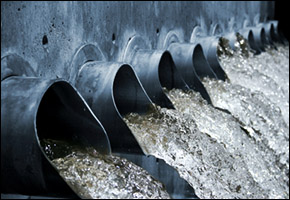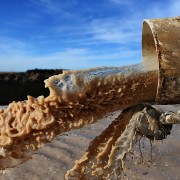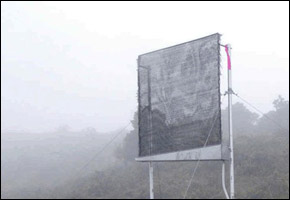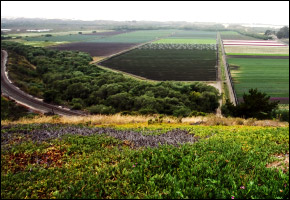New Technology Gives Thirsty Plants a Voice

As many around the world anticipate the release of a new iPhone, plants in need of water are getting their own fancy gadget to “communicate” with their growers. A new microchip technology that allows plants to send text messages to farmers’ cellphones asking for water, might be the key to sustainable agriculture and future human space missions to the Moon, Mars and beyond, Discovery Channel reports.
The thin microchip — smaller than a postage stamp — is affixed to the plant’s leaves and can send messages to cellphones whenever the plant needs more water, said Richard Stoner, President of AgriHouse, a company marketing the technology.
The crop-monitoring system can be a valuable tool for sustainable agriculture in water-scarce or drought-stricken areas of the world, such as the western United States, where much of the water used for food growing is drawn from underground aquifers.
The technology can also cut the heavy costs of supplying water and food to future outposts on the Moon and Mars, experts say.
The original cellphone-for-plants was in fact designed by scientists at NASA, working on technologies for future manned missions to distant areas of the Solar System. They found that astronauts would not be able to take enough food and supplies for potential missions to Mars, which are estimated to last for about two years.
“You need plants on future space missions,” said Hans-Dieter Seelig, a scientist at the University of Colorado at Boulder who worked on the NASA project. “They take out waste carbon dioxide, produce breathable oxygen, and the astronauts can use them as food.”
The first NASA tests showed that the microchipped plants required 10 percent to 40 percent less water to grow than regular plants.
Meanwhile, NASA is not the only science agency aiming for sustainability in space. Last week, the School of Engineering at the University of Autonoma of Barcelona (AUB) and the European Space Agency (ESA) unveiled a pilot plant that recovers food, water and oxygen from waste, carbon-dioxide and minerals.
MELiSSA, or Micro-Ecological Life Support System Alternative, can be used in the development of technology for a “future regenerative life support system for long-duration human space exploration missions,” an ESA press release said.
With its attempt to recycle organic waste for food production, MELiSSA exceeds the newly released water recycling system at the International Space Station, which purifies water from urine, sweat and exhaled air.
Sources: Discovery News, European Space Agency
Inset image courtesy of AgriHouse.
, a Bulgaria native, is a Chicago-based reporter for Circle of Blue. She co-writes The Stream, a daily digest of international water news trends.
Interests: Europe, China, Environmental Policy, International Security.










Leave a Reply
Want to join the discussion?Feel free to contribute!